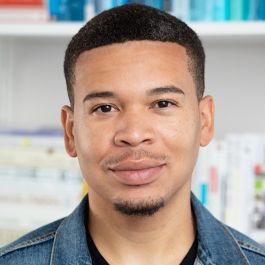We’re all familiar with the timeless game of telephone. Someone whispers a word or phrase to the person next to them, and then each player does the same until the last in line finally announces what they heard.
Sometimes the word or phrase has been communicated correctly. Usually, it has not.
For business leaders, maintaining alignment across teams shouldn’t be like a game of telephone, but it often is. A Gallup survey assessing the state of hybrid workplaces showed that 30 percent of respondents reported decreased team collaboration, while 23 percent listed reduced cross-functional communication and collaboration as one of their top challenges.
Unlike a simple game of telephone, maintaining alignment has high stakes for companies. According to HubSpot, companies that said they were “tightly aligned” saw 24 percent faster three-year revenue growth.
Ola Olusoga, head of design at the remote-first fintech company CaptivateIQ, said maintaining alignment across teams starts at the top. “If design and engineering leaders are in agreement that healthy communication and collaboration between the two teams are necessary for successful outcomes, then positive shifts naturally follow.”
Built In SF spoke to Olusoga about how CaptivateIQ approaches cross-team collaboration and creates effective communication channels, and what advice he has for other businesses.
Software company CaptivateIQ provides revenue teams with an intuitive platform to create, track and update commission plans tailored to their business’s evolving needs.
What kind of communication channels or collaborative strategies does CaptivateIQ use to facilitate communication between your design and engineering teams? In your opinion, what makes them successful?
At CaptivateIQ, we strive to ensure deep communication, collaboration and alignment exist between design and engineering to foster successful outcomes. As a remote-first org, we work on leveraging synchronous and asynchronous methods to reduce friction and increase natural cohesion.
What we’ve found works well is when design and engineering shift to a product team first mentally. This places specialty second and establishes alignment on purpose for coming together — to identify problems and create great solutions.
The product team — which at its core is composed of engineering, design, and product management — establishes rituals and processes that foster a tight feedback loop of communication and collaboration.
Rituals and processes include product team standups for accountability and reflection, sprint planning for alignment, frequent bug bash sessions for live QA collaboration and Slack channels for asynchronous communication. All these rituals bring the group together creating healthy touchpoints that draw out conversations — ideas, feedback, comments, suggestions — that lead to stronger outcomes for the work, team, our customers and our business.
Both design and engineering teams are encouraged to ask questions, lean into areas to learn more, push back when needed, and share insights and context that helps uplevel the collective.”
How does your company culture foster the kind of collaborative relationship required to make the two teams successful?
We embrace an EPD organizational model where engineering, product management and design work concurrently in an agile fashion to unpack problems and sprint toward solutions. All parties have shared ownership of how things play out and are present at the start of all initiatives. We believe this balance leads to a positive impact on the work, team dynamics, the customer’s experience and our business.
We run monthly EPD all-hands where we actively share happenings across the org, shout out team members, and focus on all aspects of EPD. Designers are invited to engineering team calls and events, and vice-versa. We aim to reduce silos within product teams and push for cross-functional engagement.
We’re also big on transparency, so both design and engineering are encouraged to ask questions, lean into areas to learn more, share opinions, push back when needed, and share insights and context that help uplevel the collective. This goes back to shared ownership; we believe through healthy collaboration and accountability, together we can create successful outcomes.
What advice would you offer to other companies looking to build alignment between the two teams?
Alignment starts at the top. If design and engineering leaders are in agreement that healthy communication and collaboration between the two teams are necessary for successful outcomes then positive shifts naturally follow. I would advise other companies to start there.
An additional piece of the puzzle is product management. I would encourage other companies to adjust to an EPD organization structure where engineering, design and product management are viewed as lateral partners with equal voices working together toward shared outcomes. Instilling this approach to products positions teams to think and act more collaboratively.
Evaluating rituals and processes that encourage communication, alignment and accountability also play a large role in fostering stronger bonds between teams. A simple ritual could be creating space each or every other week for the team to discuss what’s going well, what isn’t and what can be improved to improve alignment.







